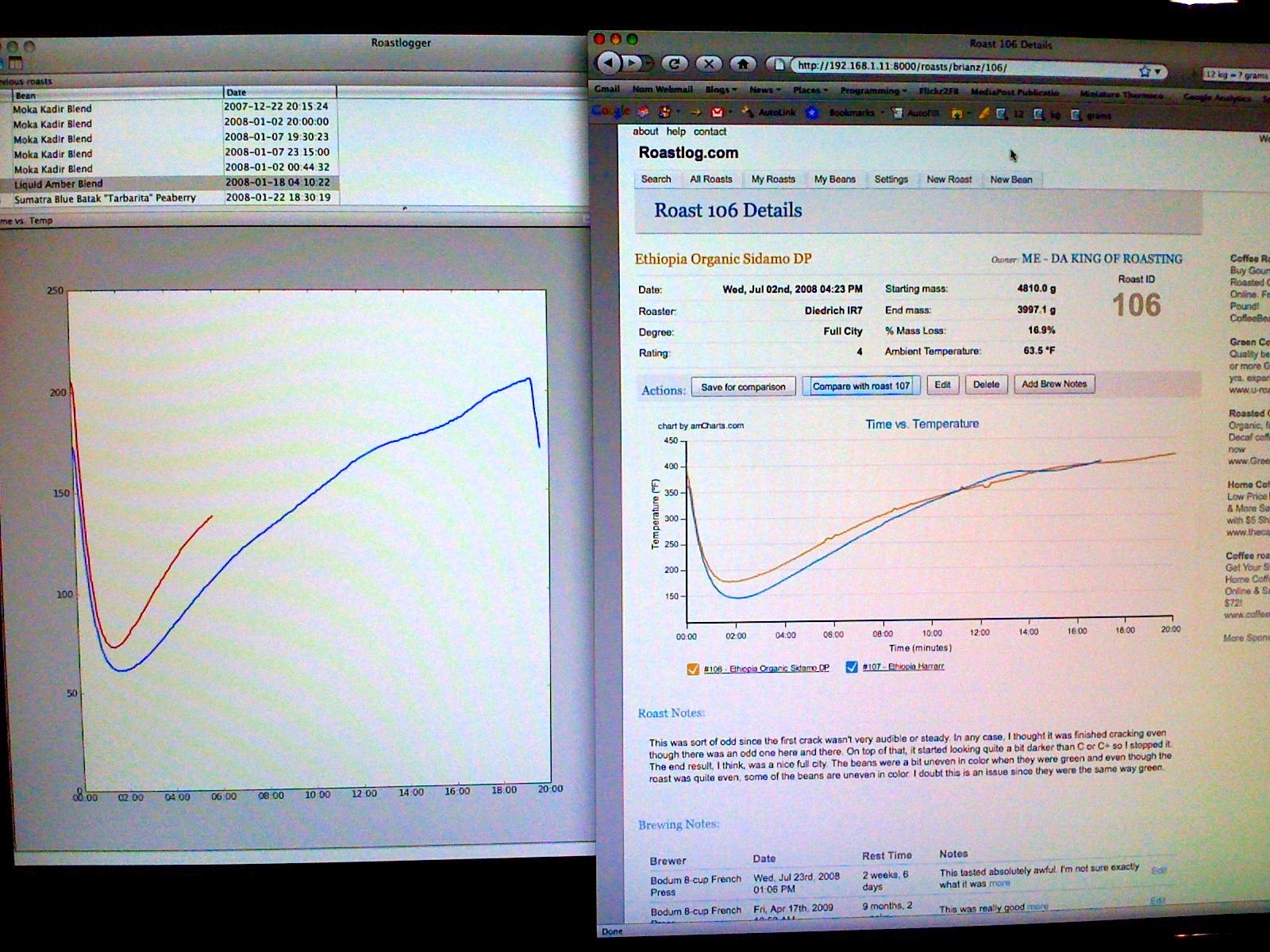As most people reading this blog know, the coffee roasting community is pretty small. After working in the industry for awhile, roasters often end up making contacts with other roasters who work for different companies. Talking with industry colleagues is a great way to learn more about roasting, trade stories and ask advice. Since roasters talk, companies like RoastLog benefit from a kind of informal word of mouth marketing. Because of this, I find myself believing that most roasters already know about RoastLog – what it is and how it works.
I had bit of a reality check the other day when a RoastLog user mentioned to me that he had been talking to a roaster at another company who thought RoastLog was an automated roast profiling system. This got me thinking that we need to do a better job communicating what RoastLog is and what it isn’t. This blog entry is an attempt to do just that.
When we first looked at what kind of technology solutions were available to coffee roasters a few years ago, we saw a massive gap between what large coffee companies could afford and what was available to the small and medium size roasters, the ones we feel make up the heart and soul of specialty coffee. Even when smaller roasting companies could afford the software and hardware that was commercially available; those systems usually did not satisfy the needs of roasters who are focused on improving quality. If you want a computer to control your roaster for you, no problem, pay $10,000+ and take your pick from a variety of products available on the market. RoastLog offers something different.
RoastLog is focused on providing tools to roasters who want a deeper understanding of the roasting process in order to improve quality and consistency. Automated systems might help with the consistency part of the equation, but this comes at the expense of quality. RoastLog does not take averages in order to determine average roast profiles. Instead RoastLog makes it easy to track information and then make that information easily accessible so roasters can come up with accurate quality-minded conclusions.
Based on experience, roasters can feel their way through the roasting process but, testing intuitive theories takes time, time that is not always afforded to the busy production roaster. RoastLog makes it easier for roasters to turn theories into knowledge simply by using the system. Load coffee into the roaster, track the profile, mark events like changes in application of heat and then compare profiles. We’re not only talking about lines on a graph, but more importantly the impact of changes in profile on the aroma, taste and tactile sensations of the cup. By relating cupping notes to specific roasts you can progressively improve the roast profile based on empirical evidence and not merely a gut feeling. RoastLog does not want to take the art and craft out of the roasting process. We just want to make it easier for roasters to make coffee taste better.
In the meantime, when we’re not making improvements to the system (readers of this blog know about the imminent arrival of the RoastLog inventory system and the progress we’ve been making on the multi-input data bridge) we’ll do our best to reach out to the coffee community to talk about what RoastLog is, how it work and what it can do for you. We know that in reality most roasters have never heard of Roastlog and if they have, they may not know exactly what the system can do. Don’t be surprised if you get a call or find an email in your inbox from one of us sometime soon.
